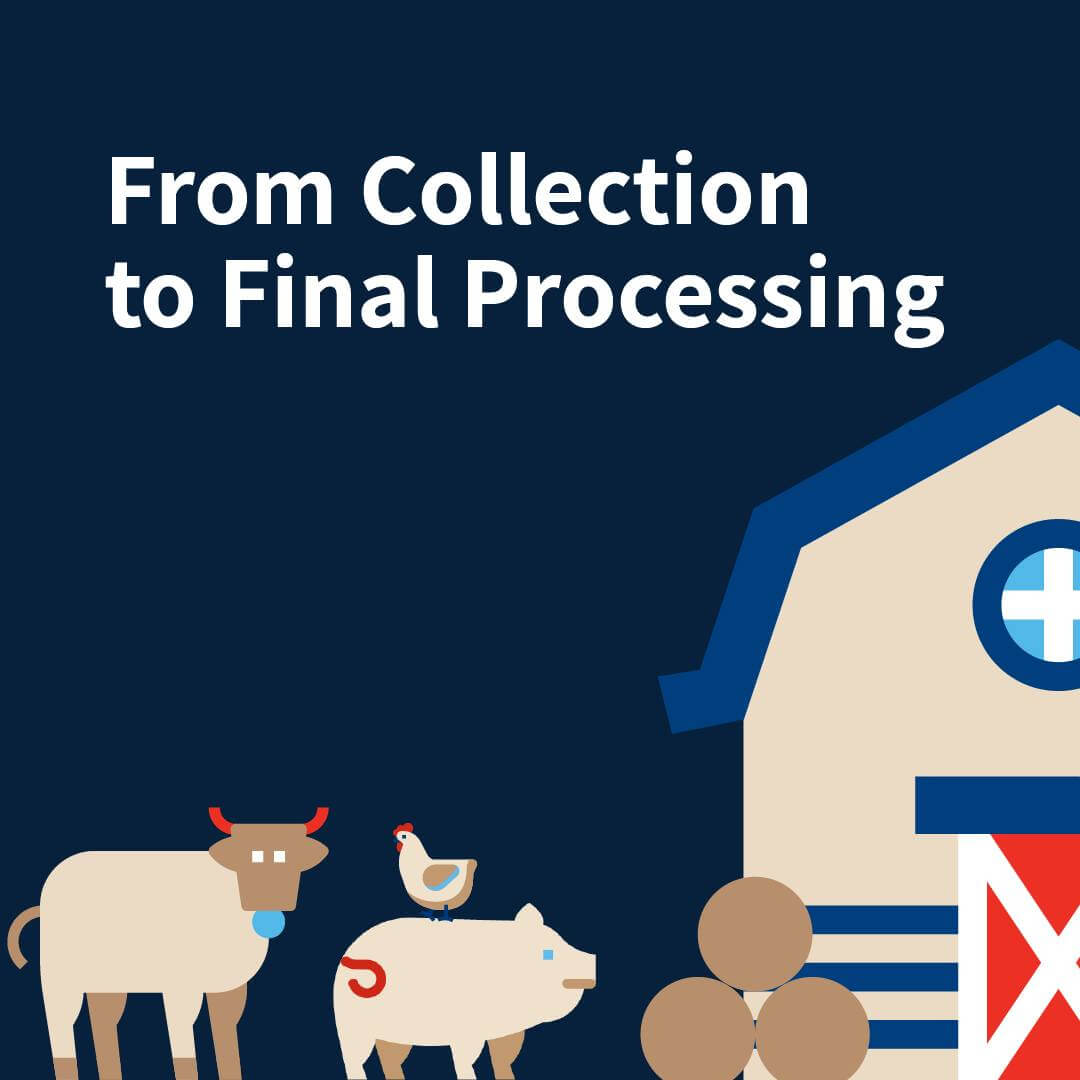Step 1: Collection of Recovered Raw Materials by Sanimax
On a daily basis, Sanimax collects recovered raw materials and animal by-products from thousands of sites, including farms and slaughterhouses. We serve more than 40,000 customers in North America, and provide the rapid collection that is essential for averting health and environmental risks.
Step 2: Optimized Transportation and Logistics
As soon as a demand is received, Sanimax sends out its specialized trucks to securely transport the recovered raw materials to the processing plant.
Thanks to real-time logistics and optimized by-sector routes, our teams respond quickly while at the same time reducing greenhouse gas emissions. The objective: to transport the organic matter swiftly and without delay, in compliance with applicable standards.
Step 3: Factory Processing – The Rendering Process
Once at the right plant, the recovered raw materials are processed via a technique called rendering. They are cooked, then passed through centrifuges or presses to separate the fat, solids, and water, before resulting proteins are dried. This produces rendered fat (tallow/animal fat) and protein meal.
At its 17 sites, Sanimax ensures safe and dependable processing with outstanding quality control and traceability. This means our end product can be used in the food industry.
With our circular economy, we’re making the food industry greener and more sustainable!
Discover more educational content here!
